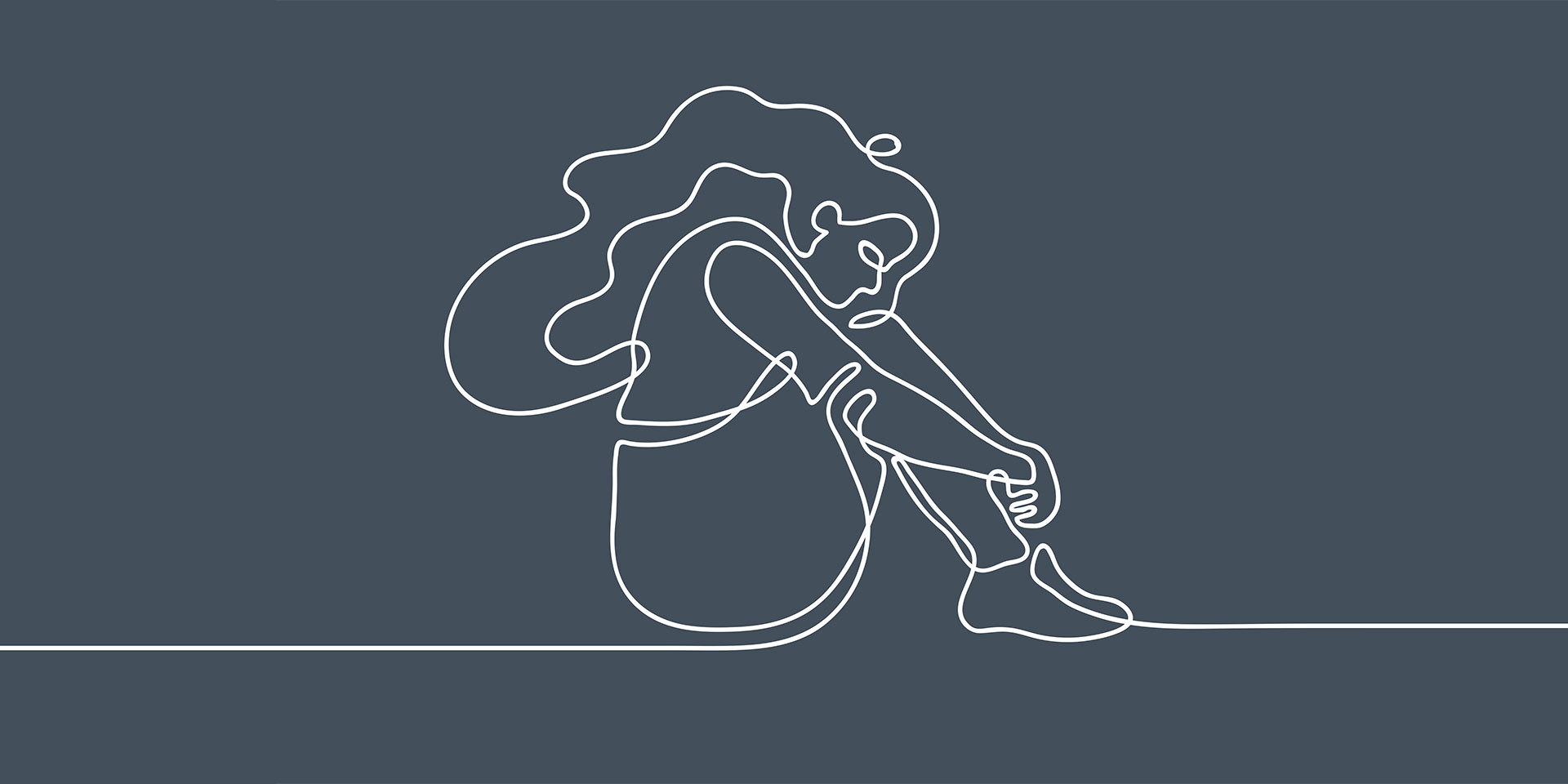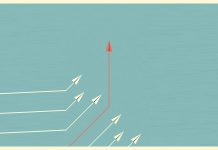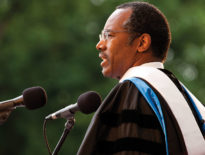“To be fearless may be a gift. However, the most precious one is, probably, the courage resulting from developing the habit of not allowing fear to dictate your actions”, says the renowned Nobel Peace Prize winner and democracy activist in Myanmar, Aung San Suu Kyi, in her essay titled “Free from fear”.
We are living in a true “era of anxiety”, according to the words of Robert Leahy, the director of the American Institute for Cognitive Therapy, who, in his book Anxiety Free, discusses the reasons why we got to such a state. The increased level of anxiety felt by many is primarily due to a feeling of increasing instability in relation to others (see the divorce rate and low involvement in religious practices).
The frequent changing of jobs, together with moving to another city or country, modern people’s tendency to postpone marriage, the unrealistic increase in the level of expectations when it comes to one’s lifestyle (“I must have the latest smartphone!”), an idealistic image of the relationships we ought to have with those around us, and the expectations concerning retirement are all factors which contribute to a state of fear, uncertainty, and anxiety.[1]
The difference between fear and anxiety
Professor Joseph LeDoux from New York University explains the distinction between fear and anxiety. Identifying the main causes and remedies for fear, the author distinguishes it from anxiety by relating it to dangerous stimuli and a close connection with man’s imagination, thus explaining the role of fear in neurological disorders.
Fear is a quick, automatic reaction to an existing stimulus that has the potential to harm us. Anxiety, on the other hand, is a negative emotion. In this case the threat is not present, only anticipated. While fear is present in all living beings and has helped with the preservation of life, anxiety is characteristic of human beings only, who are capable of anticipating and imagining possible scenarios in the absence of stimuli.
How does fear work?
Fear appears unconsciously, at a mental level, causing a kind of chain reaction in the brain. The trigger or stimulus can be anything: an insect, a thief, an accident or even the sight of a stage on which someone needs to deliver a speech. This trigger is responsible for the whole process. Until it reaches the end of the “chain”, the stimulus also influences other parts of the body, leading to effects like an increased heartrate or irregular breathing.
Faced with a threat, people and animals have three response options: freeze, fight, or flight, says Joe Navarro, nonverbal communication specialist, in his book What Every Body Is Saying: An Ex-FBI Agent’s Guide to Speed-Reading People.
Most of the time, fear is learned
Fear is a universal survival mechanism, and some of the things we learn in life concern situations and events that represent a danger or a threat to us. At an individual level, this kind of information is communicated multiple times through social interaction, says Elizabeth Phelps, psychology and neuroscience professor at New York University. Fear can be learned through the direct experience of a threat but also through social means, like verbal warnings or other observations.
Interestingly enough, the expression of socially learned fears is the same as the expression of the fears people acquire by personal experience. To show how this phenomenon occurs among people, Phelps and her colleagues proved that the amygdala plays a critical role in the physical expression of a fear response both for humans and animals. Moreover, the amygdala responds when people process different information through conditioned learning, as in the case of Pavlov’s famous experiment.
In other words, we learn by observing other people’s emotional expressions, and this type of learning can be as effective as learning from direct experiences. This also seems to be the reason why some people develop certain types of phobias towards certain stimuli, like snakes and spiders, without ever having met any of them, as Andrea Olsson from Colombia University points out in her experiments conducted with Phelps.
The most frequent phobias
According to a list compiled by the publication LiveScience, the most widespread fears of Westerners are:
1. The fear of going to the dentist. This is not difficult to understand. After all, who enjoys going to the dentist? However, there’s a big difference between this discomfort and developing a true phobia. And still, several phobias related to the medical field have been identified, like the fear of hospitals (nosocomephobia), fear of injections (trypanophobia) or repulsion at the mere idea of going to the doctor (iatrophobia). Still, none is as widespread as the fear of going to the dentist (odontophobia).
2. The fear of dogs. There are people who are afraid of these animals simply because they can bite. At the opposite pole are those who have developed a true phobia for dogs (cynophobia), where the explanation is perfectly understandable: the person was, at some point, bitten by a dog or witnessed such an attack on another person.
3. The fear of flying. For the 25 million Americans who are afraid to travel by plane, favourable weather conditions are not a good enough reason for choosing this particular means of transportation. Still, not all aviophobics are the same: some are afraid of flying, or more precisely of crashing, while others are claustrophobic (afraid of the closed and crammed spaces inside an airplane).
4. The fear of thunder and lightning. This fear, although quite widespread among Americans, is usually not admitted to because many people are ashamed of it.
5. The fear of the dark. This is a widespread fear among children. This has the potential to turn into a phobia at an adult age (nyctophobia) if the fear was not treated during childhood.
There is no fear, but fears
There are different fears depending on the nature of the danger (objective or imaginary), the type of manifestation (active or passive), the occurrence mechanism (biological or predominantly social), the social status of the people feeling afraid, the number of those who are frightened (individuals, communities), the historical era (antiquity, Middle Ages, modernity or contemporaneity) and, lastly, the political system where fear is manifested (totalitarianism, democracy)[2].
Social fear
The social character of fear is not given by the origin of the danger (from a political regime, organization or political person), but by the fact that fear is shared and transmitted from one individual to another. It involves a large number of people (classes and social categories, or nations), and is a predominantly negative emotion that appears as a reaction to imminent dangers, whether real or fictitious.
Social fears also occur in statistics. In 2009, between the 25th of September and the 7th of October, the Centre for Urban and Regional Sociology conducted a study to describe the evolution of fear in Romania, using the communist system and the current political system as benchmarks. In the period before 1989 (roughly 1965-1989) people mainly had political fears. In 2009, social fears have been induced by economic threats (the economic collapse, the deepening of the economic crisis, a lack of jobs for young people, inflation, all these being identified by 4 out of 10 people interviewed), imminent dangers like crime, street violence, corruption (mentioned by 15% of the interviewed people), and biological fears (possible natural disasters, the loss of health).[3]
The data of the study conducted by the Center for Urban and Regional Sociology also lead to the division of social fears into two categories: big differences were observed regarding the fear of unemployment (two thirds of the interviewed workers said they were afraid they would lose their jobs) compared to highly educated people (almost half of the total number of people).
The “culture of fear” is induced
Taking into consideration the surveys done both in Romania and abroad, the natural question everyone might ask is: why are there so many fears in our current society? Barry Glassner, sociology professor at the University of South Carolina, tries to answer this question in his book, The Culture of Fear, written in 1999. The author examines and exposes people and organizations that manipulate Americans’ perceptions and then reap the fruits of the anxiety they have created. Politicians, lobby groups, and the mass media are “fear traders[4]”, according to Glassner.
Three out of four Americans feel more frightened than 20 years ago, according to Glassner.
In the case of American society, the sociologist discovered that, in reality, it is the people’s perception regarding danger that has increased and not the actual risk level. Moreover, the author believes that there are people and organizations in the United States that take advantage of these fears. This is why these fears are created and maintained.
Evidently, the situation is not limited to the American space. The mass media bombards its audience with sensational stories and news, designed to increase ratings. In communication, this phenomenon is known as the “media effects theory”. Certain TV shows, for instance, gain popularity and maintain airtime by including an element of sensation or terror. Stories from the world of crime, drugs, and disasters are broadcast on most news channels because these are things that draw the audience’s attention.
The written press often mentions cases where statistics have been tampered with, events exaggerated, and emotionality over-emphasized. This truncates objective information and induces panic and fear in relation to the discussed topics, generating various fears among people.
The same thing holds for political propaganda and advocacy groups. A quite widespread practice, regardless of the country we are talking about, is the one used in political propaganda. It goes like this: if a politician knows that he can get more votes by financing a program for teenage mothers, they will exaggerate the problem of teenage pregnancies and will instil fear of what might happen should such a financing program be rejected.
How to overcome fear
Even if, in some cases, fear is constructive and helps us face dangerous situations and even save our own lives, most of the time fear does nothing but raise a wall between a person and their personal and professional fulfilment. Regardless of the fear’s nature—be it at an individual level (the fear of public speaking, the fear of failure, the fear of success) or at a social level, identified by phenomena that affect our lives depending on the society we live in (economic collapse, deepening of the economic crisis, the lack of jobs for young people, inflation)—one’s mental state plays an important role.
This is why it is essential to have a balanced approach to life by knowing ourselves better, our own personal potential and by making a clear distinction between situations whose success depends only on personal intervention (a good speech in front of an audience depends on the qualities and training of the speaker) or on the intervention of external factors (the fear of unemployment).
By replacing fear with eagerness and enthusiasm, we contribute to the reduction of this psychological state[5]. It is very important to regard the things that frighten us as challenges we can overcome, instead of letting ourselves be overwhelmed by fear. Emphasizing courage and leaving one’s comfort zone, where we hold ourselves in a false sense of security, ensures the removal of the feeling of fear[6]. No matter how big the fear we feel is, we must not give up the fight. Strength, courage, and trust are three qualities we acquire when we decide we will no longer hide from fear, but face it.[7]



















